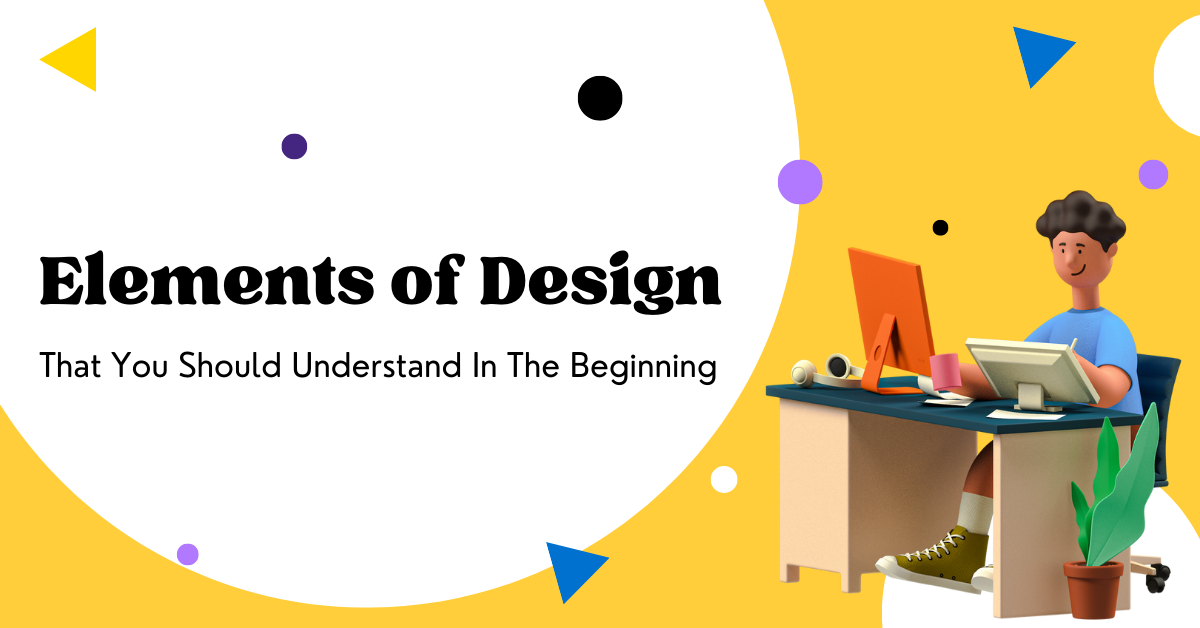Design elements are the basic units of any visual design. They can be combined together to create a piece of artwork. The elements of design include line, shape, texture, color, and space.
1. Lines
The route bridging two points in space is referred to as a “line.” Vertical, diagonal, or horizontal lines can all help to focus the viewer’s attention on a certain section of your image. Other types of lines, such as curved or patterned lines, can be used to create texture in addition to straight lines.
2. Shape
The simplest definition of a shape is a region that is two dimensional and has an outline surrounding it. Graphic artists may also use other elements like line, colour, value, and shadow to make a figure appear three-dimensional. Three types of forms exist: abstract shapes that approximately represent parts of nature, geometric shapes that are angular and mathematically coherent, and organic shapes that are found in nature.
3. Form
The concept of form considers how a shape or physical arrangement occupies space. Instead of creating form through a three-dimensional real shape, designers create the illusion of form on a flat surface by using light, shadow, the appearance of an object’s curves, negative space, and the objects around the subject matter.
4. Space
Effective use of space can assist others in understanding your design as you meant. White space, also known as negative space, is the region between or surrounding the focal focus of an image. Positive space is the region that your composition’s subject matter occupies. Space is important in your design since a congested layout might tire the viewer’s eyes.
5. Texture
Texture is one of the design elements used to convey how an object appears or feels. Tactile texture is a sensation of touch, regardless of whether it is bumpy, velvety, or ribbed. Visual texture, on the other hand, relates to the imagined texture of the artwork, which can improve the sensory experience and add visual appeal.
6. Color
The ambience of the composition is influenced by colour. When light waves hit something and then reflect back to the optic nerve in our eyes, we sense colour. Designers and artists utilise colour as a tool to express and characterise a subject. Designers use colour to portray perspective, depth, mood, and light. Designers create colour schemes using the colour wheel and the concepts of colour theory, a set of guidelines for combining, modifying, and mixing colours.
7. Value
The brightness or darkness of a colour affects its value in design. A typical technique to represent a color’s values is with a gradient, which depicts a series of variations on one hue arranged from lightest to darkest. Artists may employ the various colour values to give their works of art the illusion of weight and volume.
Conclusion
In conclusion, the design aspects should be taken into account while constructing any kind of design. Line, shape, form, space, texture, and colour are some of the design aspects. Each component has the ability to impart a certain atmosphere or vibe to a design. The design components can be combined to provide a unified and aesthetically pleasing design. “Simplicity is about subtracting the obvious and adding the meaningful.”
― John Maeda, The Laws of Simplicity: Design, Technology, Business, Life. Keep checking the Artmeet blog for further resources.

